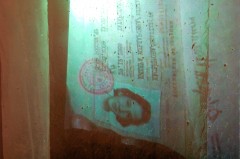Essays Jake Uitti — November 7, 2018 18:12 — 0 Comments
Traveling Musician
Below is a story that appeared in Alaska Beyond magazine in Feb. 2018
While visiting nashville, Tennessee, singer-songwriter Aloe Blacc found something he did not expect. Inside the Country Music Hall of Fame and Museum, Blacc stood before a large mural depicting the origins of the museum’s central genre. The painting showed a cultural mashup of players with West African banjos, as well as fiddles and other harmonic and melodic elements that originated in Europe.
“It was a wonderful visual to capture the spirit of country music,” Blacc says.
The artwork, by painter Thomas Hart Benton, speaks to the kaleidoscopic cultural influences of music in America. And it struck Blacc, who has a Grammy nomination for his work in R&B, that he was finding connections to his own musical influences in a mural devoted to country.
Encountering this art was one of many transformative moments for the deeply soulful vocalist and host of America’s Musical Journey, a 3D Imax documentary scheduled for release on February 16 at giant-screen theaters across the country. The film, which explores the roots of American music, follows Blacc as he travels to musically ground- breaking cities that include Chicago, Detroit, Memphis, Miami, Nashville, New Orleans, New York and others.
Known for energetic hits such as Wake Me Up, I Need a Dollar and The Man, Blacc is a first-generation American, the son of Panamanian immigrants. And he emphasizes how America’s music draws on the traditions of many different cultures: “There is so much about the music we listen to today that’s rooted in the immigrant story of America,” Blacc says. “I hope people who watch the film discover their own musicality. Music is a participatory sport, and everyone should be involved.”
Part of Blacc’s route in the film traces the path of famed jazz musician Louis Armstrong, who moved south to north through the United States, along the route followed by many African Americans during The Great Migration of the 20th century.
In the film, Blacc follows in Armstrong’s footsteps from New Orleans to Chicago and beyond, joyfully exploring the roots of genres and performing with local luminaries such as bandleader Jon Batiste and music icon Dr. John in New Orleans, and modern music-and-dance innovators such as Chicago hip-hop dancer Eddie “Pause Eddie” Martin. Blacc notes that he and Armstrong are similar in at least one important way: “Louis was a musician before becoming well known as a singer,” says Blacc, who changed focus from a career in hip-hop to one centered more on soulful crooning.
Blacc notes that guitarist Keb’ Mo’, another artist he spends time with in the film, also transformed his career narrative. “He wasn’t a blues guitarist to begin with,” Blacc explains. “But he stumbled on the opportunity to play blues music, and that sparked a whole new direction.”
The ability of musicians to change and improvise is key to music’s survival and growth, Blacc notes. And often that ability is born out of a new familiarity with other instruments and cultures. “I think the thing that I learned the most during the process of the film,” Blacc says, “is to search for different sounds. … As a musician, I find it really important to look back at the foundation of my craft to understand more, to dig deep.”
Visit aloeblacc.com and americasmusicaljourney.com to learn more.
The answer isn't poetry, but rather language
- Richard Kenney



